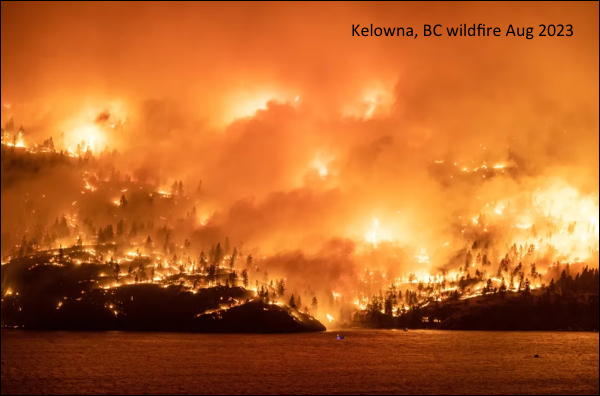
The increasing frequency and severity of wildfires in North America can be attributed to a combination of factors, with climate change playing a significant role. Here’s an explanation of why wildfires are intensifying and how preventive measures can help mitigate their impact:

Climate Change Factors
Higher Temperatures: Rising temperatures due to climate change lead to drier conditions and increased evaporation of moisture from vegetation and soil. This creates a more conducive environment for wildfires to ignite and spread.
Drought: Climate change contributes to prolonged periods of drought, reducing the moisture content in vegetation and increasing the likelihood of ignition. Dry vegetation becomes more susceptible to catching fire and spreading rapidly.
Earlier Snowmelt: Warming temperatures cause snow to melt earlier in the year, leading to a longer fire season. The extended period of dry conditions increases the window of opportunity for wildfires to occur.
Insect Outbreaks: Warmer temperatures and milder winters allow certain insect pests to thrive. Bark beetles, for example, can infest and kill trees, creating vast areas of dead and highly flammable vegetation.
Wildfire-Weather Feedback Loop: Extreme weather events such as heatwaves, strong winds, and lightning storms are becoming more frequent due to climate change. These events create conditions conducive to fire ignition and rapid spread, forming a feedback loop where wildfires themselves can further exacerbate the local climate conditions that fuel their growth.
Preventive Measures to Lessen Severity
While it’s challenging to completely eliminate wildfires, proactive steps can be taken to prevent and lessen their severity:
Forest Management: Implementing controlled burns and thinning vegetation through prescribed fire and mechanical methods can reduce fuel loads and mitigate the intensity of wildfires.
Community Planning: Ensuring that homes and infrastructure are built and maintained with fire-resistant materials and adhering to defensible space guidelines can help protect communities from wildfire risk.
Early Detection and Rapid Response: Investing in advanced fire detection technology, such as satellites and automated camera systems, can improve early fire detection. Swift response with well-trained firefighting teams is essential to containing fires before they grow out of control.
Public Awareness and Education: Educating the public about fire safety, responsible outdoor practices, and the risks associated with wildfires can lead to better prevention and reduced human-caused ignitions.
Climate Change Mitigation: Addressing the root cause of intensifying wildfires requires global efforts to reduce greenhouse gas emissions and limit the extent of climate change. Transitioning to renewable energy sources and adopting sustainable land-use practices can help mitigate the effects of warming temperatures.
Community Preparedness: Communities should develop and practice evacuation plans, establish emergency communication channels, and collaborate with local authorities to ensure swift and organized responses to wildfires.
Combating the increasing threat of wildfires requires a comprehensive approach that combines climate change mitigation, responsible land management, community preparedness, and public education. By addressing the underlying factors and taking proactive measures, we can work towards reducing the severity and impact of wildfires in North America.
Mori says, “Be the spark for change .. Prevent Wildfires!”
